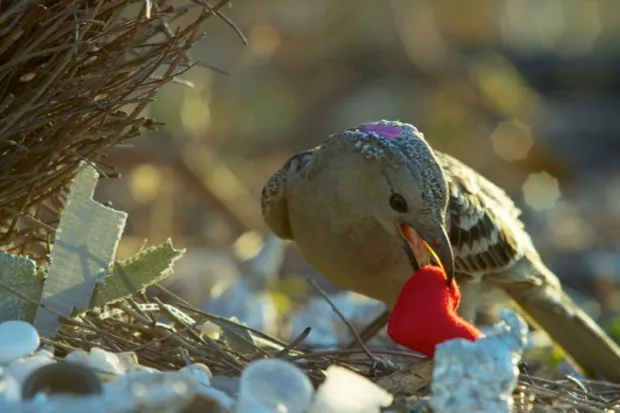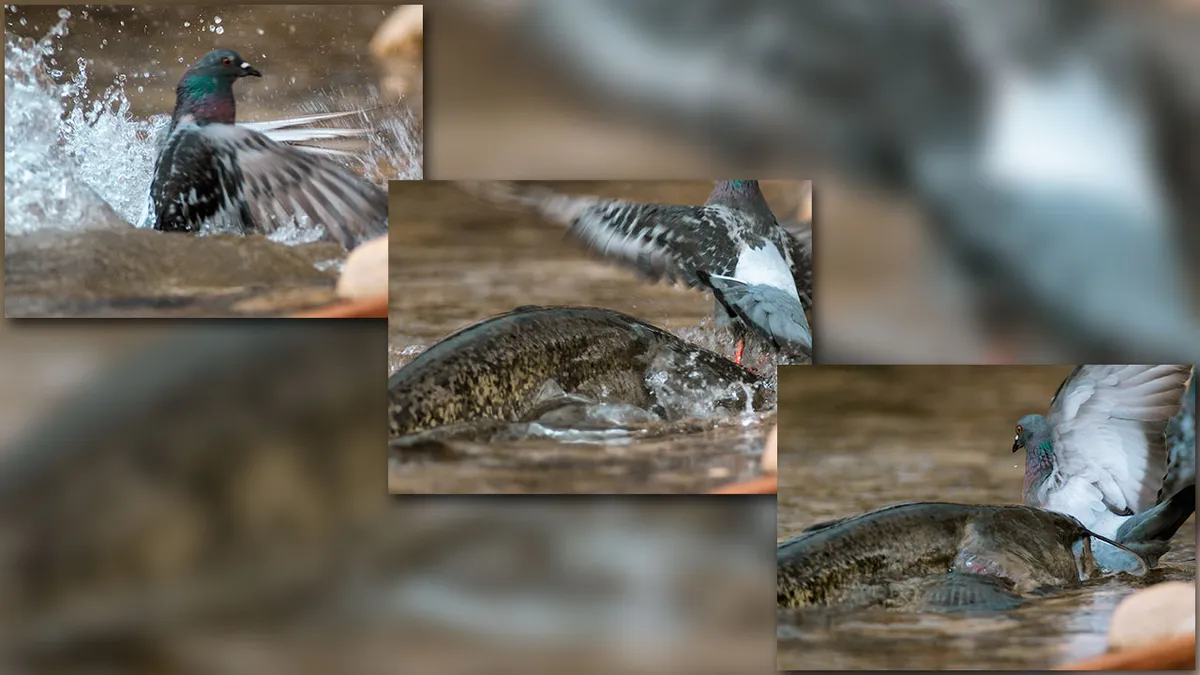Our planet’s human population is booming, making the urban environment the fastest growing habitat on Earth. Animals living in or near cities have to cope with constant movement and change. Yet our bustling streets also offer rich bounties in the form of food, shelter and warmth.
ForSir David Attenborough’sPlanet Earth II, I spent almost four years making a film on urban wildlife. What excited me so much was exploring the surprising new ways in which animals are overcoming the challenges of living in human habitats, carving out a home in these alien worlds.
Metropolitan monkeys

It was a thrilling moment photographing this female Hanuman langur leaping with her baby across a six-metre gap, four storeys high, in Jodhpur, India.
Each morning, we watched a group of 15 bachelor males pile in to the heart of the ‘blue city’ to challenge the resident alpha male for his territory. The alpha would often have to chase the bachelors for over a mile across the rooftops. The reason that this area is so highly contested is because it’s perhaps one of the best langur territories in the world. Hindus associate these primates with themonkeygod Hanuman, and revere them. In the temple gardens, they’re given all the food they can eat. The alpha male has sole mating rights with the adult females in his troop and, because of their energy-rich diet, they are more fertile than the Hanuman langurs found in neighbouring forests.
What struck me on this shoot was just how generous the Indian people are towards wildlife living in their cities. The reward for them is being surrounded by wonderful animals.
Mumbai leopards
When we set out to film leopards in Mumbai, India, we were hoping to capture them hunting, but in the backs of our minds we were questioning whether we would even see one. Film crews have tried before and only captured glimpses of this highly elusive cat. For any large carnivore to survive in the urban jungle it has to keep to the shadows, and leopards are known for their stealth.
To give him the best chance of spotting a leopard, our cameraman Gordon Buchanan was equipped with a thermal camera, which he used to scan the horizon for warm-blooded animals out at night. This area of Mumbai does, in fact, have the highest concentration of leopards anywhere in the world. During the day, they sleep in a forested park. When night falls, they head into the streets to hunt for domesticated animals (such as dogs and pigs) that make up a large proportion of their prey.
With the thermal camera and a good deal of luck, Gordon was able to capture remarkable footage of urban leopards hunting. But what amazed him most was to see just how close to people they roamed.
Hyenas in Harar

When I heard about spotted hyenas freely running through the streets of Harar, Ethiopia, I couldn’t quite believe it. The story goes that over 400 years ago, when the city walls were being built, ‘hyena gates’ were incorporated… not big enough to allow in an opposing army, but just right for a hyena. Now, two hyena clans enter the city through these gates every single night in search of bones left out by the town butchers.
While walking down a narrow cobbled street on my first night in the old town, I held my breath as eight hyenas walked past me, brushing my leg. A few nights later I filmed the two dominant hyena clans fighting over access to the city. Over a hundred hyenas were battling around my feet, and somehow my fear had disappeared. The peaceful pact between humans and hyenas in this city was so evident that I didn’t feel in danger.
I am told that inside the city walls the hyenas never attack people or livestock. But why are they welcomed here, when elsewhere on the planet they are vilified? It’s because Harar’s inhabitants believe that each time the hyenas cackle they are gobbling up a bad spirit in the street. It’s a truly remarkable example of how humans and beasts can live alongside one another harmoniously.
Bowerbird bling

Filming great bowerbirds in Townsville, Australia, was a particularly enjoyable endeavour. These are highly intelligentbirds, full of character and each with their own distinct aesthetic. For them, the city is a treasure chest of brightly coloured objects that they can collect and decorate their bowers with. Their hope is that all this bling will impress a female.
We first had to find our character. We were looking for an old male (they can live to 25 years old), as these tend to have the most impressive bowers. They also tend to be the biggest thieves! The birds prefer to steal from neighbouring bowers than search for their own objects within the city. Indeed, bower-crime is higher in the urban environment than in the neighbouring countryside. Perhaps there are just too many alluring objects to acquire. These thieves are particularly keen on synthetic objects because they tend to hold their colour and do not perish in the sunshine.
It’s amusing and fascinating watching the birds spend two hours every day meticulously rearranging the objects in their bower. But the real entertainment begins when a female arrives. Then, the bower entrance becomes the male’s stage, and his dance can begin.
Crafty raccoons

Raccoons are doing incredibly well in North American cities. They are well adapted to finding food in the concrete jungle, and by being active at night they avoid contact with humans. They can squeeze through small gaps, and have incredibly dextrous hands. They are also the perfect size for accessing rubbish bins or opening shed doors. If you’re too big you are easily noticed, and that’s why we see medium-sized scavengers, such as raccoons and foxes, doing so well in our cities.
For me, the most remarkable thing about urban raccoons is that they are better at solving problems than their country cousins. A recent study showed that they are willing to invest more time in trying different techniques to access food, perhaps because the rewards in the city can be so rich. The team saw this on the shoot when they observed a mother raccoon come back for three nights in a row to try to get into a bird feeder filled with nuts. It was only on the third night that she succeeded, but it was worth it!

It was a huge surprise to hear the story of a fish catching and eating a bird – it’s usually the other way round! The wels catfish tends to feed on invertebrates and smaller fish, but in one place in Albi, in the south of France, it has developed a taste for pigeon.
Next to a 1,000-year-old bridge in this city is a ‘No fishing’ sign. For this reason, catfish are found in enormous numbers, and they grow up to 2.4 metres in length. By the end of summer, there are not many fish for left for them to eat. So, in the last 15 years, some of them have turned their attention to catching pigeons instead.
As the pigeons bathe, oil from their feathers starts to flow downstream, and the catfish detect the smell. It’s an eerie sight seeing this river monster swim towards a group of birds splashing in the shallows. When a fish strikes, you can hear a loud sucking noise – rather like something disappearing up the vacuum cleaner – as it slurps the bird into its mouth.
Opportunist geckos

The invention of the incandescent light bulb just 140 years ago changed our night skies forever, and nowhere more so than in cities. For manyanimals, artificial light creates confusion. Moths have evolved to navigate by flying at a constant angle relative to a distant light source: the Moon. That’s why they’re often found flying round and round street lights. But one animal is taking full advantage of these confused insects.
This tokay gecko was photographed in Hong Kong. Hong Kong has a great deal of light pollution, with one of the brightest night skies in the world. As the tokay gecko is a nocturnal lizard, you wouldn’t imagine that its eyes could cope with such bright light, but their vertical slit pupils allow them to see in a far greater range of light conditions we can. The tiny slit only lets in a small amount of light when under a bright bulb, but opens wide in the dark.
The other feature that makes tokay geckos so well adapted to the urban environment is their phenomenal grip. Each foot is lined with half a million microscopic hairs, so tiny that they form a molecular bond with the surface, almost like atomic-scale Velcro. Having evolved to walk on wet leaves in the rainforest, their feet stick well to metal and glass, making this lamp post an ideal place to dine!
